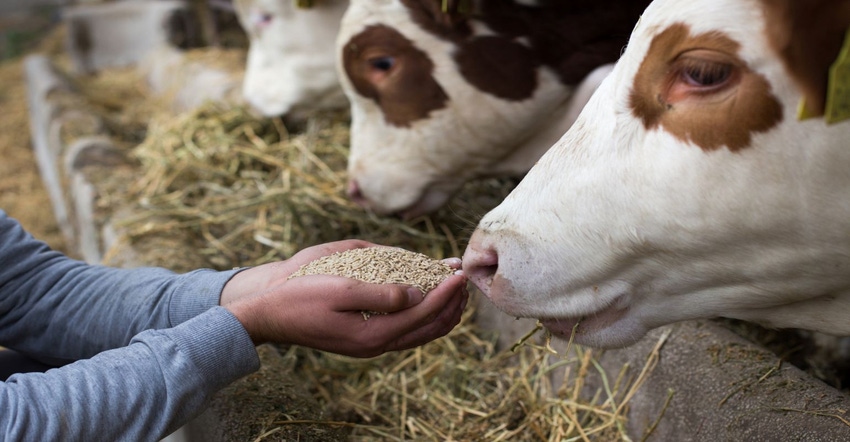Nitrate poisoning in cattle
Certain plant species are more likely to accumulate nitrates.
August 8, 2022

All plants can contain some nitrate, but buildup of nitrates to toxic levels in forage plants occur when they are under excessive stress. Certain plant species are more likely to accumulate nitrates. Certain weeds (such as pigweed), Johnsongrass, corn, sorghums, and Sudan grasses are the most common causes of nitrate poisoning, but any grass or weed with a high leaf-to-stem ratio can be a problem.
Nitrates are usually highest in young plants and nitrates decrease as plant mature, unless growth stress is encountered. Stressors that cause abrupt decrease in plant growth such as lack of sunlight, drought and high temperatures, disease, or herbicide application can contribute to increased nitrates. Nitrate concentrations are usually greatest in the lower third of the plant stem, but can be found in leaves. Very little nitrate is found in flowers or stems.
Nitrate is not particularly toxic to cattle, at normal levels. When nitrate containing forages are consumed the nitrate is converted in the rumen into ammonia and used by ruminal microbes as a protein source. An intermediate product in this process is nitrite, when too much nitrite is produced it is absorbed into the blood. The nitrite binds to hemoglobin in the blood, forming methemoglobin – a substance that cannot take up oxygen in the lungs for delivery to body tissues. Lack of oxygen in the tissues can cause abortions of calves and death. Nitrates may cause death within 30 minutes to 4 hours after symptoms appear.
Forage testing laboratories report nitrate results in different ways. Guidelines for forage nitrate tests depend on the unit being presented. Results can be based on nitrate (NO3), nitrate-nitrogen (NO3-N), or potassium nitrate (KNO3). The toxicity levels are broken down in the following table.

Producers need to be aware of the feedstuffs they are using. It is important to use caution in your feeding programs when known nitrate accumulators are undergoing stress before harvest or grazing. If you are unsure, you need to send in a random sampling of your forage or hay to a testing center. Many county Extension offices have quick tests available for testing the presence of nitrates or prussic acid, it is good to test multiple forages and any samples showing presence of nitrates can be sent off to the lab for analysis of the concentration. Preventative measures should be taken to help prevent loss in your herd.
Source: Oklahoma State University, who is solely responsible for the information provided and is wholly owned by the source. Informa Business Media and all its subsidiaries are not responsible for any of the content contained in this information asset.
You May Also Like


.png?width=300&auto=webp&quality=80&disable=upscale)
